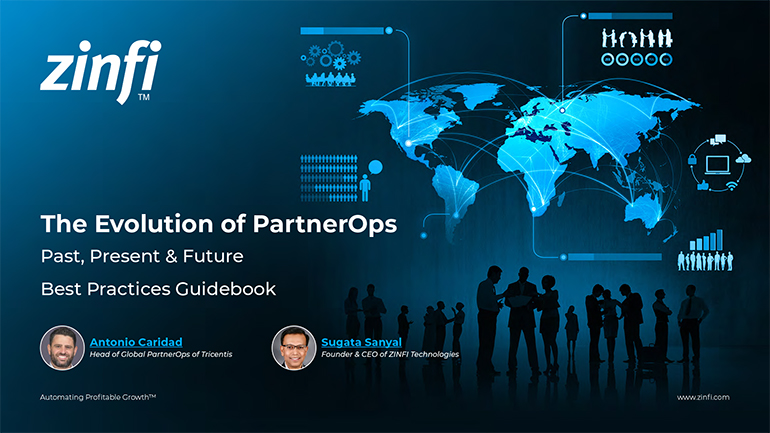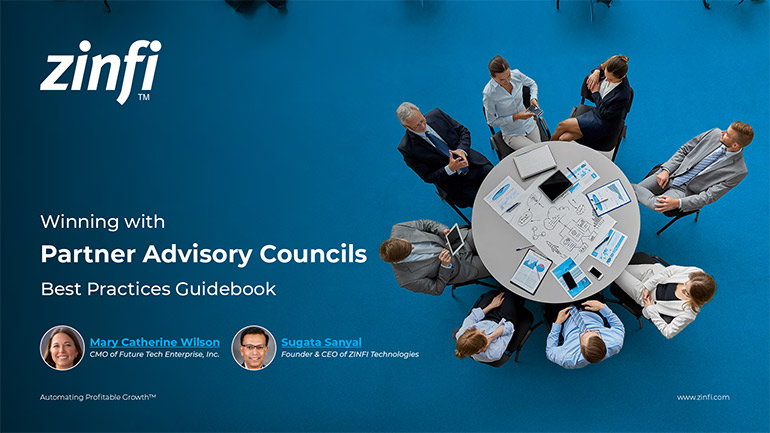Glossary - How to - Channel Partner Program Best Practices
How to Implement Channel Partner Program Best Practices?
Introduction
A channel partner program is a structured strategy where businesses collaborate with external entities—such as resellers, distributors, and managed service providers (MSPs)—to expand their market reach and drive revenue growth. These programs enable companies to leverage their partners’ expertise, infrastructure, and relationships to accelerate product adoption and customer acquisition.
To maximize success, implementing channel partner program best practices is crucial. Organizations must structure their programs effectively, demonstrate value to partners, and support them with robust tools and strategies. In Partner Relationship Management (PRM), automation is key to enhancing partner engagement, streamlining operations, and optimizing performance. PRM platforms help businesses manage relationships, track partner performance, and provide essential resources efficiently.
A well-structured partner program fosters collaboration and scalability while maintaining brand consistency. Companies that apply best practices improve operational efficiency, enhance partner engagement and increase revenue generation. This guide outlines essential best practices to help businesses create and sustain a high-performing channel partner program.
Define Clear Objectives and Goals:
Setting well-defined objectives is the foundation of a successful channel partner program. These goals may include increasing sales, expanding into new markets, or improving customer retention. Key steps include:
- Establishing specific, measurable, achievable, relevant, and time-bound (SMART) goals.
- Aligning partner objectives with overall business strategy.
- Ensuring transparency so partners understand their role and expected contributions.
- Implementing PRM software to track performance and goal attainment.
Select the Right Partners:
The success of a channel partner program heavily depends on choosing partners that align with the business’s values, market focus, and product expertise. Best practices for selection include:
- Thorough background checks and evaluation of industry experience.
- Assessing the potential partner’s market reach, sales capabilities, and customer relationships.
- Ensuring cultural and operational alignment to facilitate seamless collaboration.
- Using a PRM solution to automate and standardize the partner selection process.
Provide Comprehensive Training and Enablement:
Empowering partners with the necessary skills and knowledge ensure they can effectively sell and support the product or service. Best practices include:
- Developing robust onboarding programs with product, sales, and technical training.
- Offering ongoing learning opportunities through webinars, certifications, and knowledge bases.
- Providing partners with sales and marketing toolkits to enhance their effectiveness.
- Integrating PRM platforms to offer training modules and track partner progress.
Establish Open Communication Channels:
Consistent and transparent communication fosters trust and alignment between businesses and their partners. Key strategies include:
- Implementing a PRM platform for streamlined communication and resource sharing.
- Hosting regular check-ins and business reviews to address challenges and celebrate successes.
- Encouraging partner feedback to enhance program effectiveness and drive innovation.
- Automating communication workflows for better engagement and response tracking.
Implement Performance Metrics and Incentives:
Measuring partner performance ensures continuous improvement and program optimization. Best practices include:
- Defining key performance indicators (KPIs) such as sales volume, customer satisfaction, and retention rates.
- Providing data-driven insights to help partners improve their strategies.
- Offering tiered incentives and rewards for high-performing partners to boost motivation and engagement.
- Using PRM software to automate performance tracking and reporting.
Summary of Key Takeaways:
Businesses can optimize their channel partner programs by defining clear objectives, selecting the right partners, providing comprehensive training, fostering open communication, and implementing performance metrics. PRM platforms are crucial in automating and enhancing these processes to scale and manage partnerships effectively. Implementing these best practices leads to better partner relationships, increased efficiency, and higher revenue growth.
Key Examples:
- Automotive Manufacturing: Automotive companies work with dealerships and resellers to distribute vehicles and parts. Best practices include:
- Providing dealerships with comprehensive training on new models and financing options.
- Offering co-marketing support to boost regional sales.
- Implementing digital sales tools for seamless customer experience.
- Consumer Electronics: Tech companies collaborate with retailers and resellers to sell products worldwide. Key strategies include:
- Providing partners with product demonstration units.
- Conducting joint promotional campaigns.
- Offering real-time inventory and sales analytics through a PRM system.
- Energy Production: Energy companies work with distributors to supply solar panels and energy-efficient appliances. Best practices include:
- Ensuring partners are trained in installation and compliance with regulations.
- Creating sustainability-focused marketing initiatives.
- Providing performance-based financial incentives.
- Financial Services: Banks and financial institutions partner with independent financial advisors. Best practices include:
- Offering in-depth product knowledge on loans, investments, and insurance.
- Ensuring advisors receive compliance training.
- Providing digital tools for seamless client service.
- Healthcare Services: Medical device companies collaborate with hospitals and clinics to distribute products. Best practices include:
- Providing technical training on equipment usage and maintenance.
- Implementing strict compliance and regulatory guidelines.
- Ensuring responsive customer support.
- Information Technology: IT companies partner with managed service providers (MSPs) and resellers. Key strategies include:
- Offering certification programs for advanced technical knowledge.
- Providing access to white-label marketing materials.
- Implementing automated deal registration processes.
- Retail Industry: Retail brands work with franchisees to expand their footprint. Best practices include:
- Offering a structured franchise training program.
- Providing ongoing marketing and sales support.
- Implementing customer loyalty programs.
- Telecommunications: Telecom providers partner with resellers and service providers to expand connectivity. Best practices include:
- Providing training on new products and technologies.
- Offering bundled service packages for enhanced value.
- Ensuring consistent service quality and support.
- Pharmaceutical Development: Pharmaceutical companies collaborate with distributors and healthcare providers. Best practices include:
- Ensuring proper storage and distribution of medications.
- Conducting regular compliance audits.
- Providing educational resources on drug usage and benefits.
- Food and Beverage: Food manufacturers work with distributors and retailers to expand their reach. Best practices include:
- Offering partners marketing support, product samples, and promotional materials.
- Ensuring partners maintain consistent product quality and safety.
- Utilizing data analytics to optimize distribution networks.
Conclusion:
A successful channel partner program relies on clear objectives, strategic partner selection, comprehensive training, practical communication, and performance-based incentives. These elements ensure strong partnerships, increased efficiency, and higher revenue growth.
Automation through Partner Relationship Management (PRM) systems streamlines partner engagement by centralizing training, marketing materials, performance tracking, and communication tools. This enhances collaboration and improves program outcomes.
Industry-specific customization is also key—whether in automotive, IT, healthcare, or retail, businesses must tailor their programs to partner needs. Providing targeted training, compliance support, and tailored incentives ensures long-term success.
Ultimately, a well-structured partner program fosters mutually beneficial relationships. By continuously supporting and incentivizing partners, businesses can drive growth, profitability, and market expansion, ensuring a competitive edge in today’s evolving landscape.
Associated Keywords:
- Partner Program Management Strategies
- Channel Partner Onboarding Best Practices
- How to Optimize Partner Relationships















